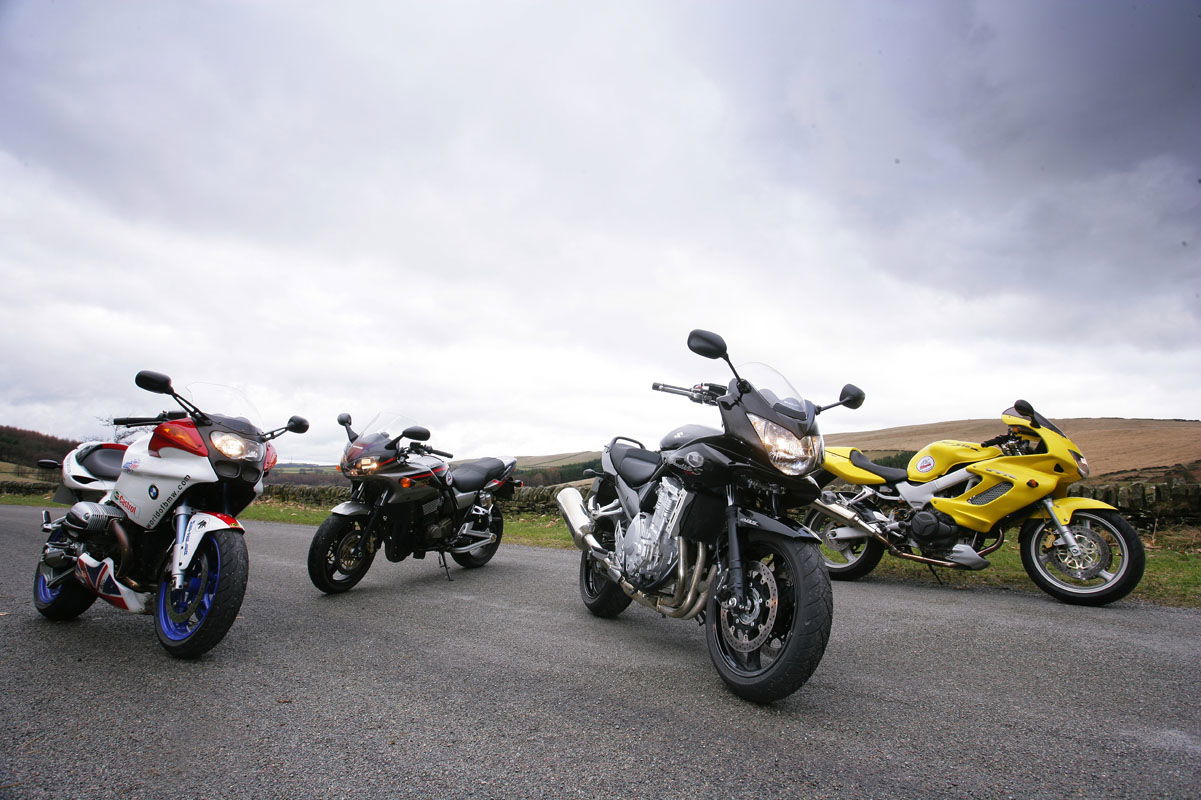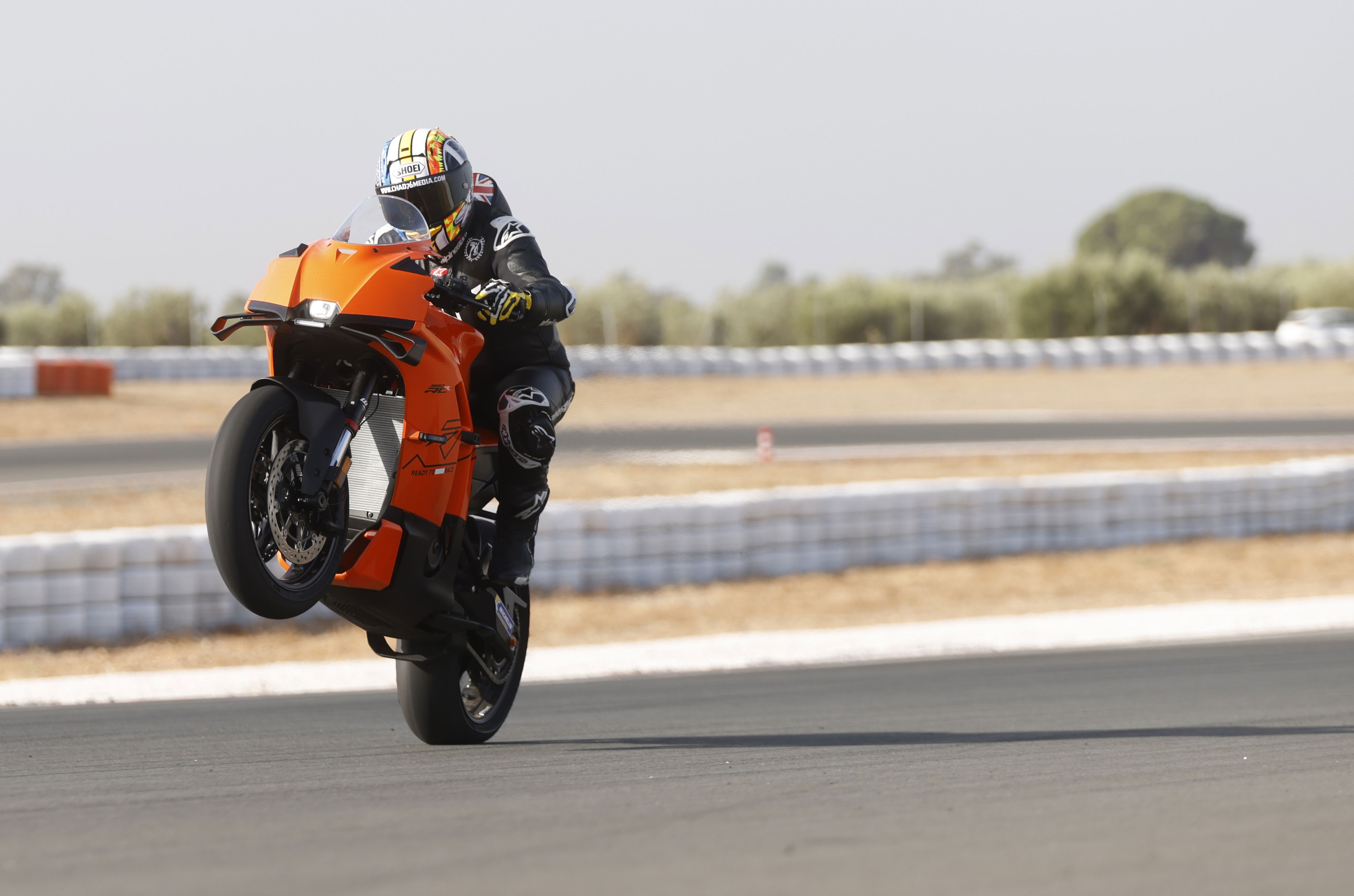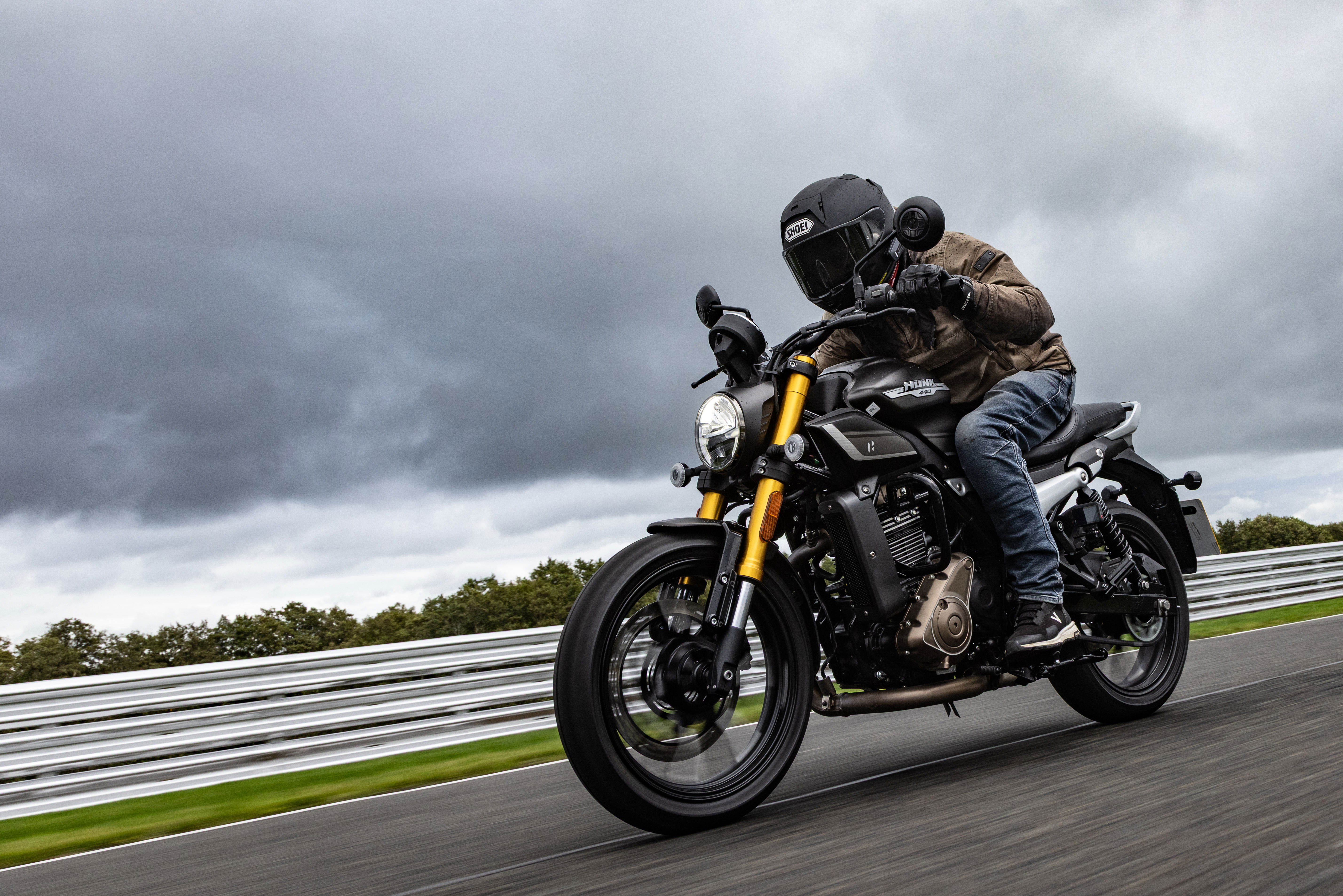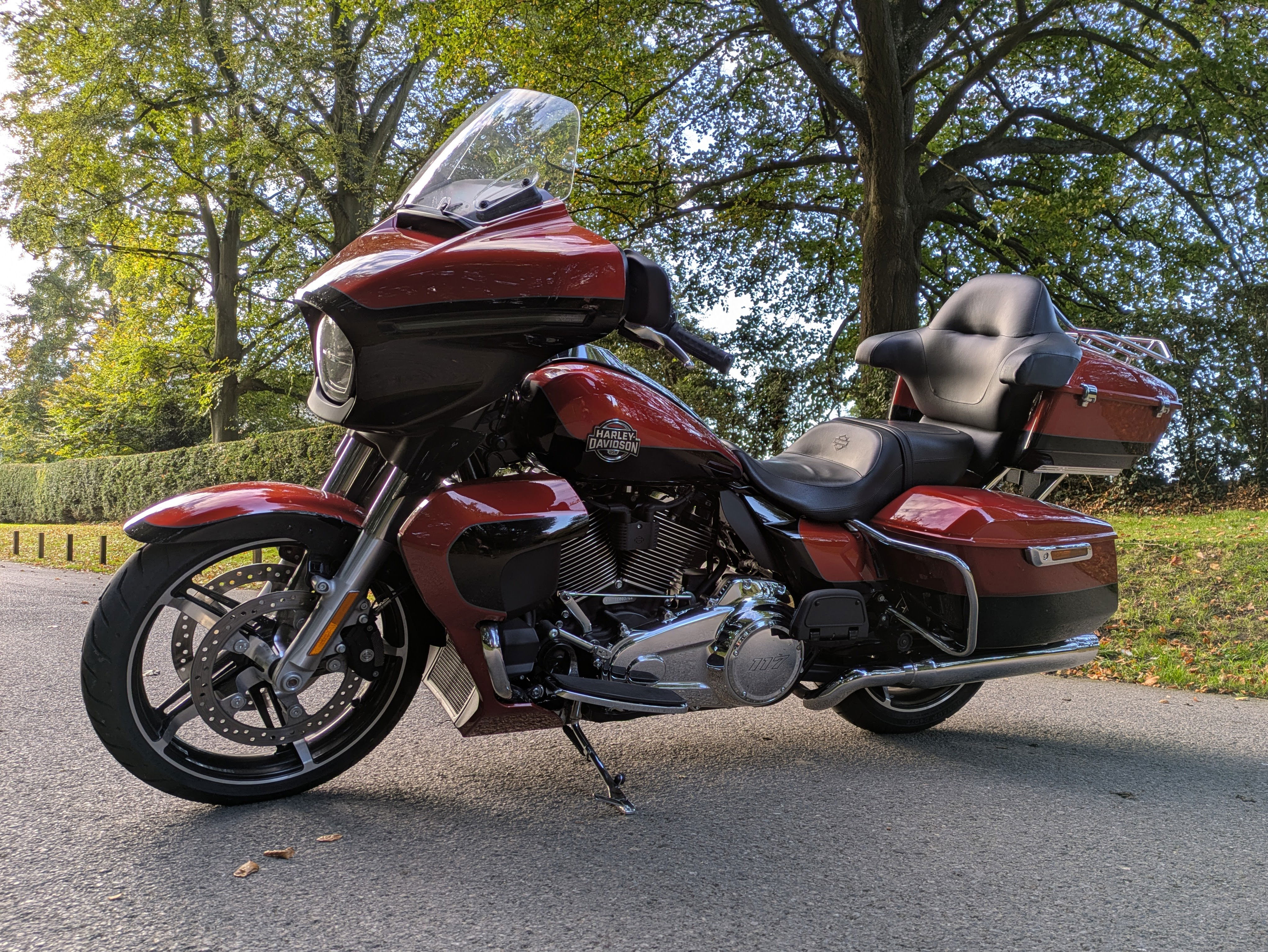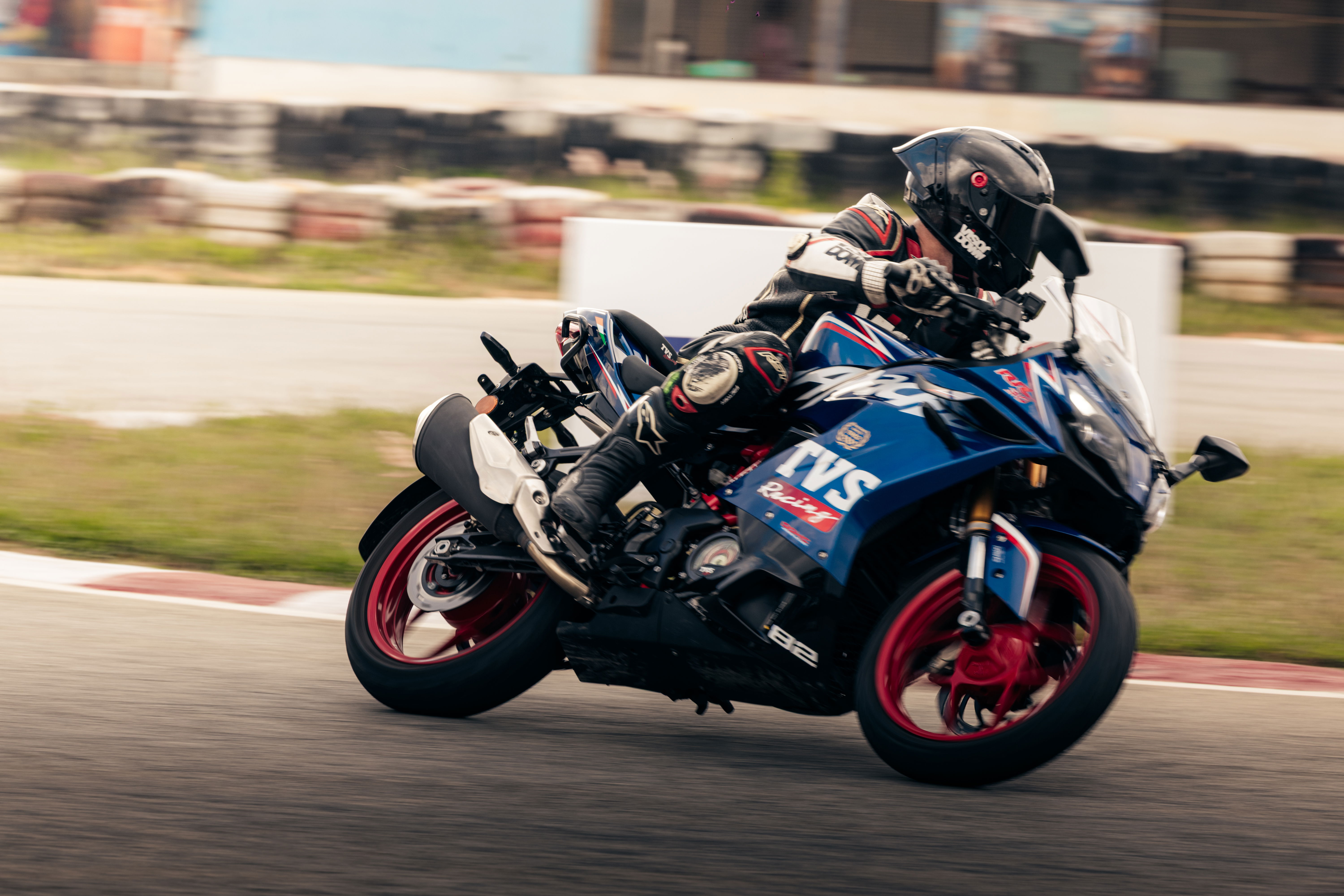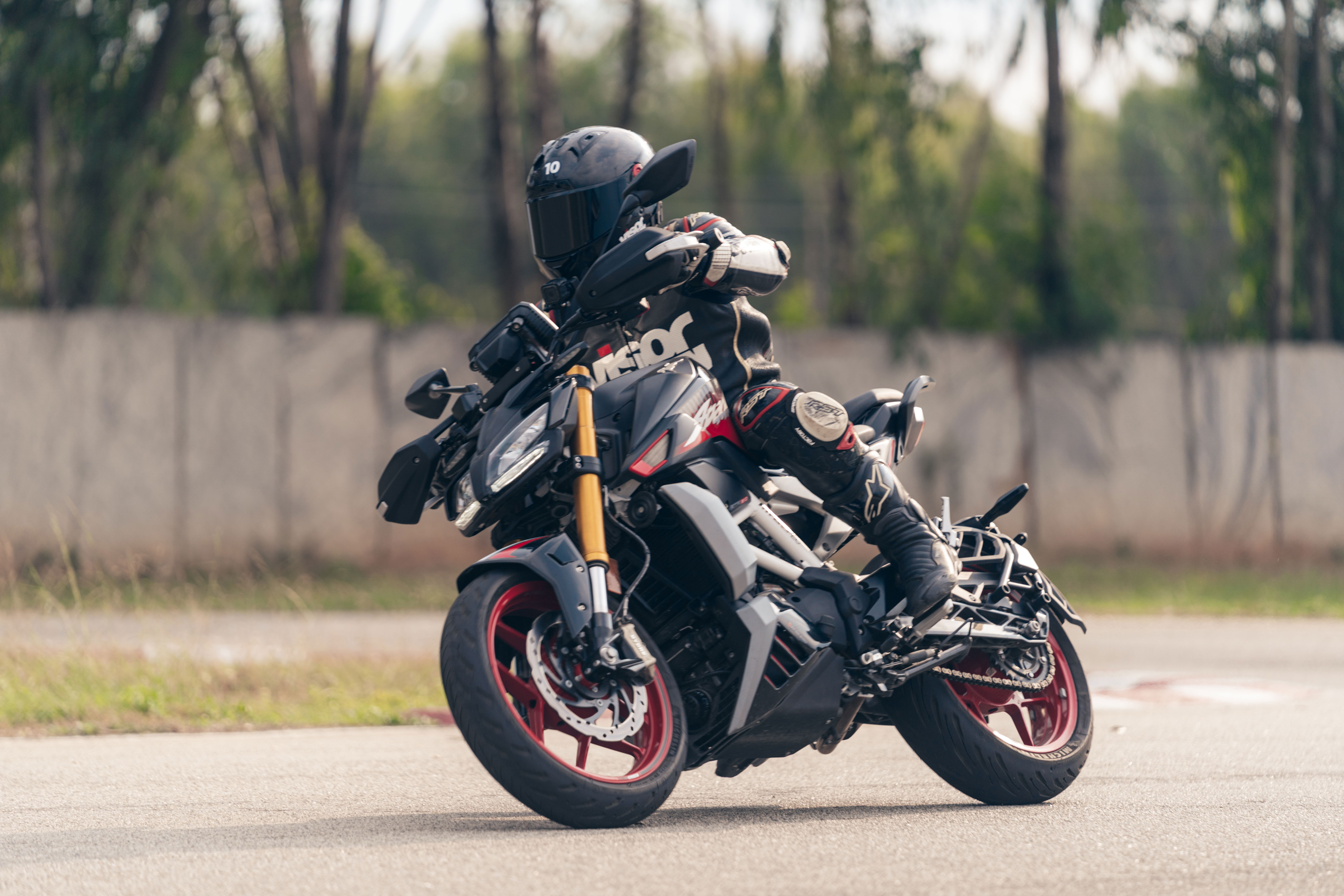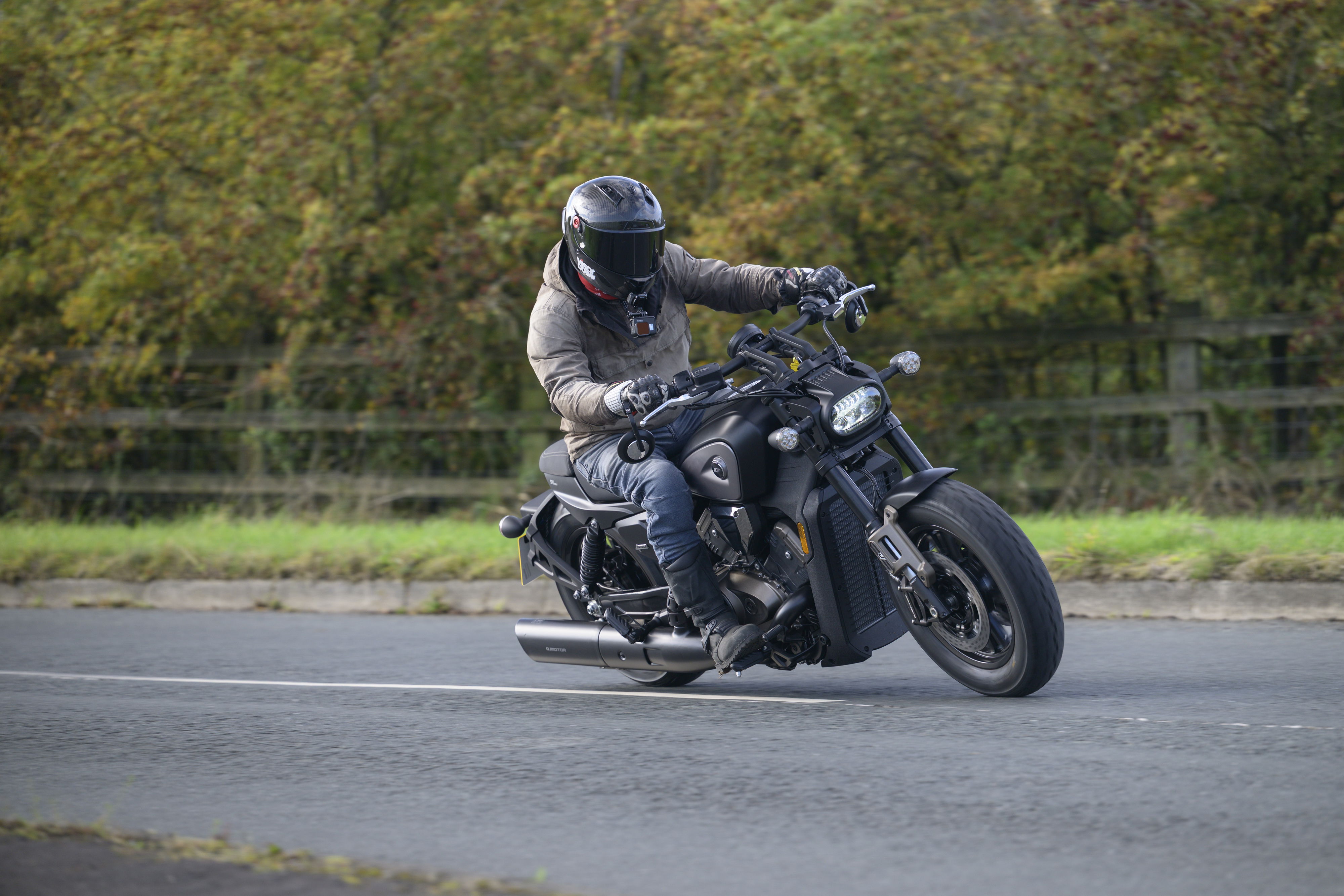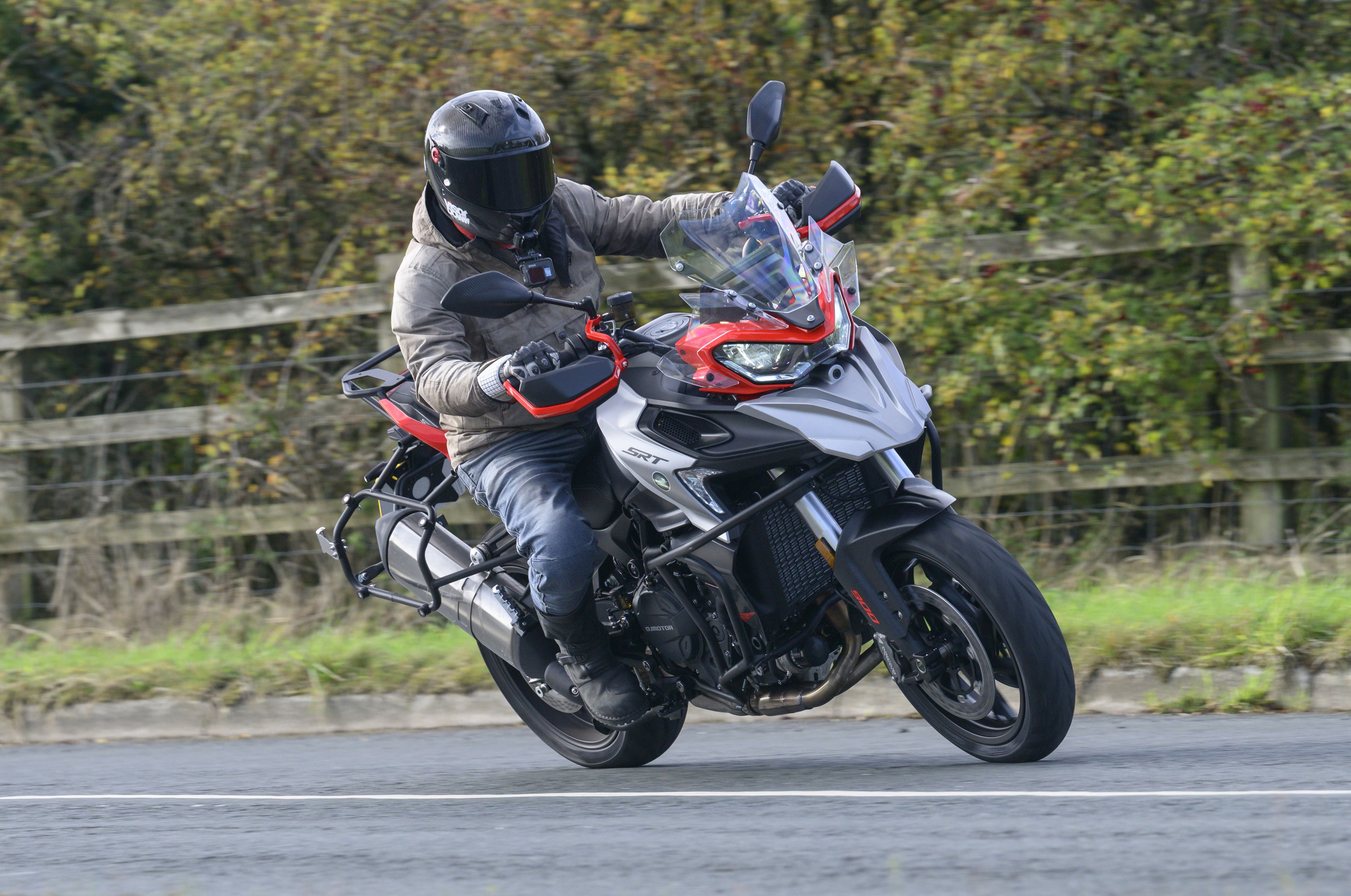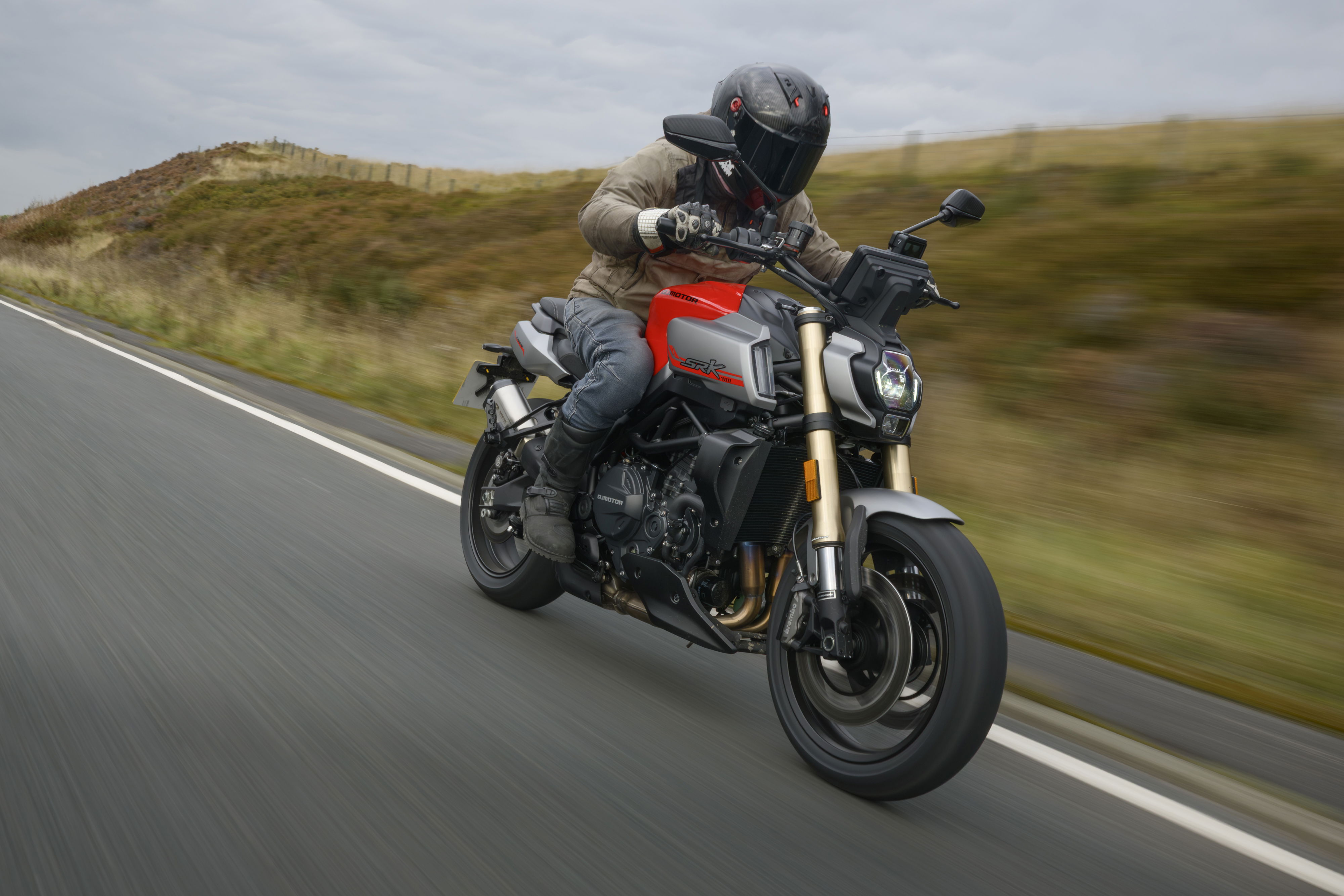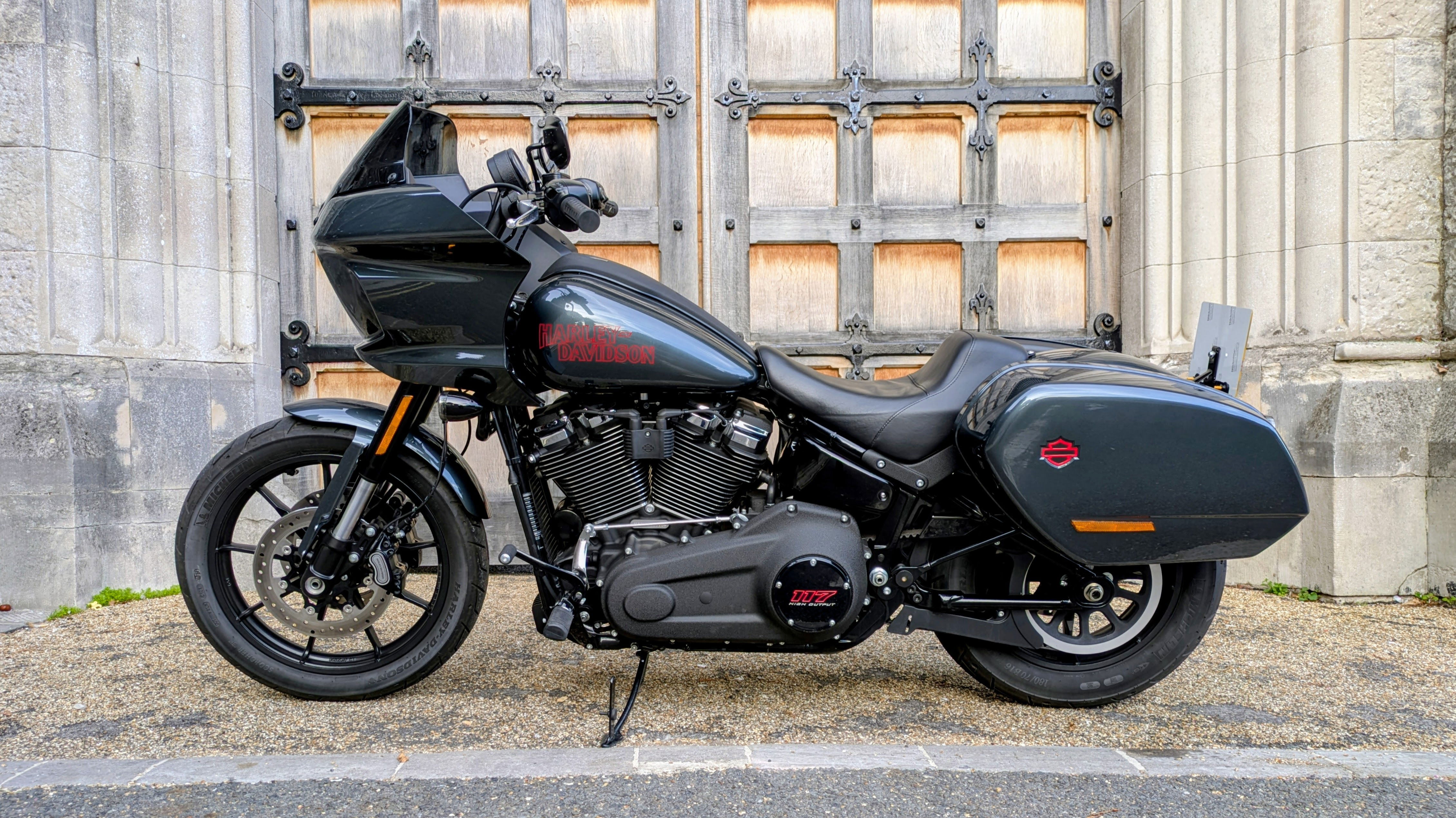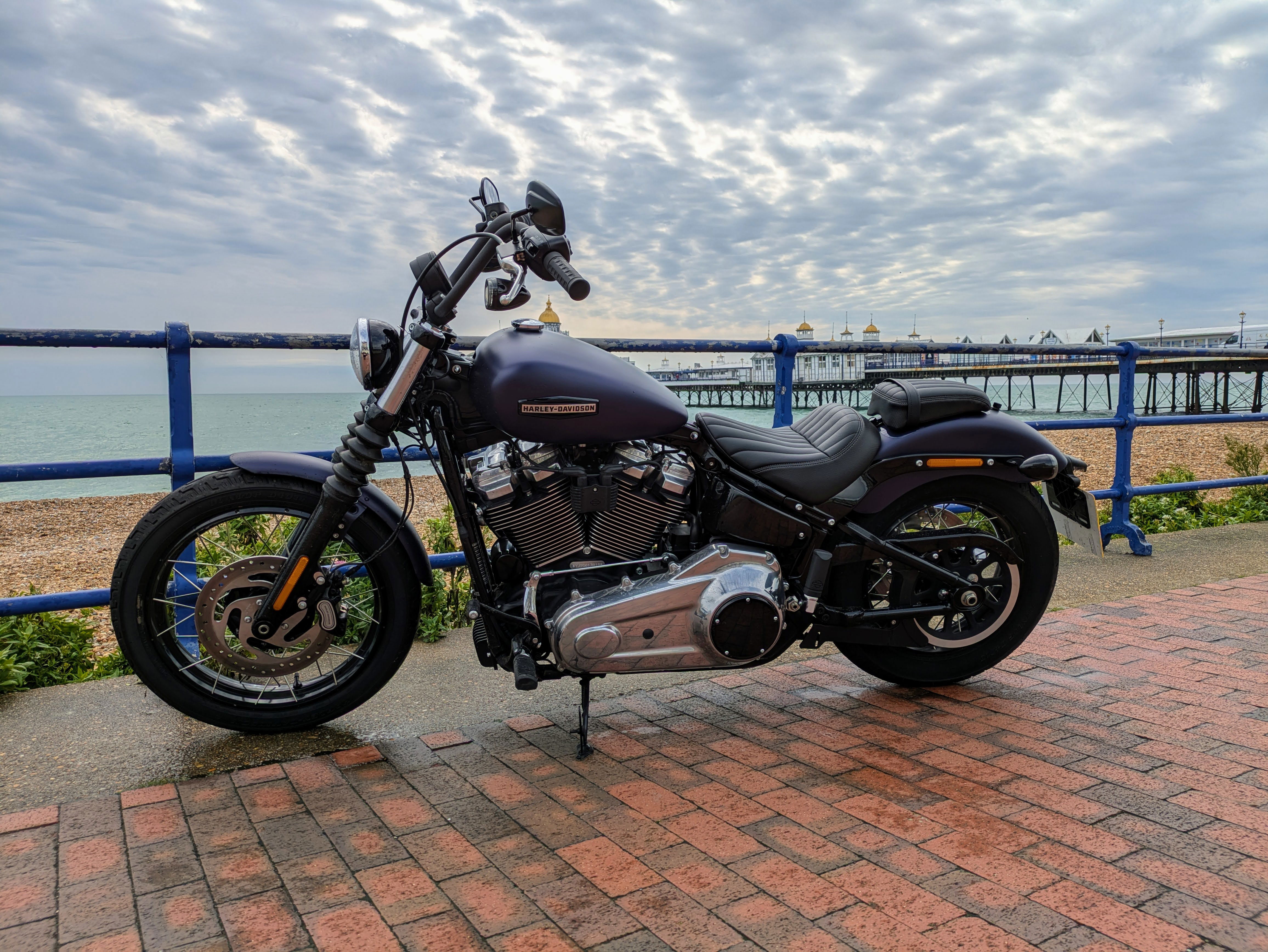Road Test: Ducati 999s vs. 1098s
The 999 didn't win so many hearts, but it won a lot of races. The 1098 has us weak at the knees but can it perform? Dukes go head-to-head in Spain.

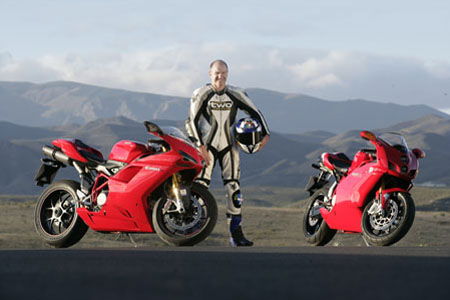 |
The last few years have been tough for Ducati. Sales of the 999 have been disappointing, and being a high-end marque in a declining bike market is a never a good place to be. Add to this the ever-developing Japanese fours, which are producing more power with even higher specification chassis at lower prices, and you can see why the success of the 1098 is so important to Ducati.
But it seems the hard work has paid off. So far the 1098 looks like heralding a new wave of success for the Bologna factory. In the UK demand has been so high it has sold out until July and still orders are being taken, which proves the point: give us what we want and we will buy it. But is the new Ducati as big a step forward when it comes to riding as it is visually? Only one way to find out. Niall tests the 1098s against the 999s under the Spanish sun at Almeria Circuit.
ENGINE
Ducati has made no secret of it: the 1098 was built to take on the GSX-Rs and R1s of this world, straight out of the box. The 999 had great success in superbike championships, but only when it was in megabucks factory trim and with a team of technicians to tend to its every whim and desire. Line one up in a superstock race however and the opposition would have died laughing at your missing 30bhp, before lapping you by half race distance.
With the 1098 this is no longer the case, but to get the best out of this bike the engine, suspension and chassis need to be pushed, and hard, to achieve their true potential.
The 999 has a very soft, user friendly throttle connection when you're trying to increase mid-corner speed at maximum lean. The 1098 is different, and like the instant feel of the brakes the motor has a razor sharp response as soon you touch the throttle. So the rider needs comparable reactions to benefit when it comes to lap times. But the bike is by no means unrideable, however if fast laps are what you're after staying sharp is crucial. I found using a higher gear in the slower corners helped and I didn't really lose out on the exit as there's a huge increase in torque over the 999.
At 5000rpm the motor begins to drive hard so to benefit you have to quickly find a bigger rear tyre contact patch by picking the bike up. On slower corners I found standing the bike up while still hanging off was quicker and safer. Once you're out of the corner and accelerating then you can climb back on top. The easy bit is next and that's watching for the three red shift lights on the dash. With a genuine 140bhp at the rear wheel these come quickly so you're changing up just after 10,000rpm. On the 999 this whole process is much less physical as everything happens at a slower pace, especially on corner exits. As always this affects top speed, which was confirmed as the best speed I saw on the 1098 down Almeria's fastest straight was 167mph, compared to 158mph on the 999. A slipper clutch would have been nice to complete this impressive package as I like to use the engine for rear braking. Over a lap of Almeria there were two sections where I struggled to keep the rear in line due to excessive engine braking, especially when I got some miles on the tyre. The 2008 race bikes will have slipper clutches fitted, but having one as standard, like Aprilia's RSV, would be a definite benefit to the serious track day hoodlum.
BRAKES
The 1098 is the first ever road bike to be fitted with monobloc calipers but I actually don't care about their stopping performance as I'd have them on my bike for looks alone!
I haven't got a clue how the caliper pistons get in to that hewn-from-solid lump of aluminium, but I don't care as they look like they've been ripped straight from Capirossi's 990 Desmosedici after its very last race in Valencia.
Needless to say they do have impressive performance, with the most prominent improvement from the 999's regular Brembos being the instantaneous reaction when you touch the lever.
It's only after you've ridden with them you realise braking for street bikes has just moved to a new level here. Although there is an instant connection this doesn't mean you'll lock the front and be spat over the bars onto the tarmac at the slightest stroke. That's because the quick response is followed by progressive feel combined with as much stopping power as you can cope with.
All of this comes from the combination of lightweight, 330mm directional discs and two-piston calipers with two large surface pads. For race track efficiency every aspect of riding has to happen that bit quicker, so the 10 or so times you hit the brakes on a lap of a circuit like Almeria means fractions of a second can be saved. In some ways it makes advanced braking techniques, like trail braking into corners, easier. Instead of getting two or three fingers to the lever mid corner, one finger is enough to instantly but safely scrub off speed. It's only when you jump back on the 999 you realise what advances have been made and what seemed like awesome brakes last year are suddenly a bit average.
CHASSIS
Swing your leg over the 1098 and you'll immediately discover a completely different riding position to the 999. A higher seat height angled towards the tank puts more weight on the front end, giving more leverage when it comes to turning in and changing direction, but thankfully without added wrist ache. Although roomy, the 999's seat position is more 'in' than 'on', and while you can adjust the foot pegs this only raises your knees closer to your ears.
We've yet to see if the 1098 is uncomfortable on long road rides but for the track it feels spot-on, hitting apexes right on cue - unlike the 999, which you had to mail in advance should you want to enter a corner. Okay, it's not that bad but I find you really have to be one step ahead of the 999 making sure you turn-in early in order to hit the spot mid-corner. The overall feeling is generally heavier and lazier than the 1098 no matter what tweaks I made to the suspension. Even if you get the riding position right on the 999 you will eventually run out of suspension adjustment, especially at the front. After just two sessions I found myself maxxed out on front preload and compression damping while still suffering occasional bottoming and underdamped forks during hard braking and on corner entry. With the 1098, standard suspension settings front and rear are much stiffer so you have a greater range to play with and less likely to get anywhere near max adjustment. The chassis also has a more rigid, taut feel but is constantly asking to be worked hard whether braking, cornering or changing direction.
LOOKS
Since production of the 999 has stopped I've started to appreciate its styling. No doubt it will be very collectable in years to come.
Like the 916 there will be sports bike fans who don't instantly lust for the 1098, but like all good art the 999 appeals more as time passes.
I believe the one feature that spoils the 999 (as a road bike) is the twin stacked headlights. I say this because with race body work the whole bike looks great as there's no focus on the nose cone. The lines of the tank, bodywork and seat unit work well, plus I like the exposed engine and funky dash. It's just the 'pee hole in the snow' lights that wreck the look for me.
No such problem with the 1098, and there was never going to be, especially as the look-a-like Desmosedici first unveiled by Ducati 18 months ago stunned the world with its beauty.
Like I said in my report from the 1098 launch back in the February issue there is exquisiteness from every angle as you take a tour around. Its soft but sharp lines, superb engineering and cleverest-to-date dash are my favourite features, but I challenge anyone to pick a fault.
The 1098 has had praise like no other since its launch in December but this needs to be backed up by race track success otherwise it is actually a complete failure. Can't see it happening myself...
1098 v 999 ON THE ROAD
The 999 gave Ducati's flagship models a hint of usability sorely lacking in its predecessors. Which way does the 1098 swing?
DUCATI 1098s
The 1098 sets new standards when it comes to road bikes. It has, quite certainly, the most useless mirrors I have ever encountered on a bike. Imagine trying to view the road behind through a shard of broken glass gaffered to a very short stick attached to the side of a vibrating fairing and you have an idea. But who cares? I love this bike.
Riding the new Duke on the road just highlights its track ability. The riding position is much more in the style of a Japanese sports bike with the seat high and bars low, but it isn't uncomfortable, just focused. Well, not uncomfortable next to other sporty machines anyway. If you're used to riding Japanese bikes the 1098's seating position will feel pretty natural, and if you ride a 916 it will feel identical!
On the move the Ducati feels sharp and focused, like a well set-up track bike. The brakes are instant but with feel, the handling on a par with the Japanese sports bikes and the engine... well the engine is just stunning.
Although it only has a few extra cc the motor feels completely different to the 999. Open the throttle hard (it takes a big turn, in typical Ducati way) in first and the Ducati rockets forward as well as upwards while the exhaust provides a wonderful deep drone as backing soundtrack. The gearbox is precise, clutch heavy and the fuel injection, although very instant in its delivery, is clean and usable enough for this not to be an issue.
On the road you have to be a bit careful with the 1098 because it's a lot faster than it feels. Like all twins the big Duke doesn't feel fast because of the lazy nature of the engine, but with a genuine 141bhp this is a fast bike. Keep a wary eye on that beautiful digital display.
But the best thing about riding the 1098 on the road is the feeling you get and the attention you get. Like the 916 when it was first unveiled everyone stares at the 1098. It has returned the sex appeal to Ducati that was sadly missing through the 999 years, but at the same time it's offering a modicum of road civility - just watch the speed.
DUCATI 999s
It's taken Ducati four years but the latest generation of 999 (the ones with the colour matched frame that came out in 2005) are at last where that bike should have been when it was launched.
I've always enjoyed riding this model of Ducati on the road, despite its limitations. True, the look takes some getting used to and it's taken until the 1098 to find a bike with worse mirrors. Plus the stand is almost impossible to get at, the clocks are odd, and the tail unit unattractive. But you don't really notice these things when you ride it. Apart from the mirrors that is, the rest I can put down to 'character'.
Compared to the 1098, the 999 feels really long, low and narrow. Sit on it and you feel like your knees could touch together. It's quite a spindly feeling bike with a riding position unlike most other machines. You sit quite flat on a 999 while still stretching for the bars, almost like a race bike from the olden days.
The motor, although lacking 20bhp compared to the 1098, is still a beauty. Gentle, relaxing, lazy power right the way through the range with a subdued but still pleasant exhaust note. I spent about two weeks last year with a 999s as my day-to-day transport and it really was a lovely bike to ride, in fact I did over 1000 miles on it during that time.
While the handling isn't as sharp as the 1098 and requires a lot more rider input, the 999 is still a great bike on smooth corners. You wouldn't fancy pinging down a bumpy back road on it but get a smooth flow going and it's very rewarding and brilliant to ride.
If Ducati had simply made the 999 look like the 1098 and left the rest of the bike unchanged I wouldn't have been upset. As it is the men from Bologna have spoiled us and because the 1098 is so good it has made the 999 feel, and look, worse than it actually is. A well priced, second-hand, 2005-on 999 is still a great bike, but the 1098 is stunning. If you've got 14 grand spare...
CONCLUSION
Racing has proved the 999 to be a very successful motorcycle when it comes to style and performance. Unfortunately this isn't the case with the production 999s as they've never escaped the shadow of their better-looking big brother, the iconic 916, and nor were they able to match the handling or performance of the 1000cc Japanese opposition. I'm glad to say, in the 1098 Ducati has now built the real 916 replacement that will look stunning on and off the track and has the performance to match. Out of the box the 1098 will be a challenge for the Blades and R1s of this world but it needs to be ridden hard in the process. But if you're not into on-the-limit riding I guarantee you'll cherish the riding experience just the same. All boxes are ticked here from awesome acceleration to compliant handling so you'll never stop smiling. And when you're finished riding you can check out your datalogging before giving your beauty a quick polish.
SPECS - 999s
TYPE - SUPERSPORTS
PRODUCTION DATE - 2006
PRICE NEW - £13,995
ENGINE CAPACITY - 998cc
POWER - 127.6bhp@9800rpm
TORQUE - 73lb.ft@7900rpm
WEIGHT - 211kg (WET)
SEAT HEIGHT - 780mm
FUEL CAPACITY - 15.5L
TOP SPEED - 164mph
0-60 - n/a
TANK RANGE - N/A
SPECS - 1098s
TYPE - SUPERSPORTS
PRODUCTION DATE - 2007
PRICE NEW - £13,995
ENGINE CAPACITY - 1099cc
POWER - 141.2bhp@9400rpm
TORQUE - 81lb.ft@7800rpm
WEIGHT - 199.6kg (WET)
SEAT HEIGHT - 820mm
FUEL CAPACITY - 15.5L
TOP SPEED - 176.2mph
0-60 - n/a
TANK RANGE - N/A
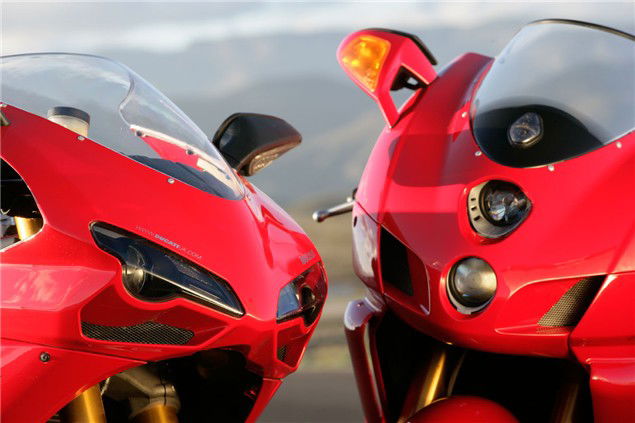
The last few years have been tough for Ducati. Sales of the 999 have been disappointing, and being a high-end marque in a declining bike market is a never a good place to be. Add to this the ever-developing Japanese fours, which are producing more power with even higher specification chassis at lower prices, and you can see why the success of the 1098 is so important to Ducati.
But it seems the hard work has paid off. So far the 1098 looks like heralding a new wave of success for the Bologna factory. In the UK demand has been so high it has sold out until July and still orders are being taken, which proves the point: give us what we want and we will buy it. But is the new Ducati as big a step forward when it comes to riding as it is visually? Only one way to find out. Niall tests the 1098s against the 999s under the Spanish sun at Almeria Circuit.
ENGINE
Ducati has made no secret of it: the 1098 was built to take on the GSX-Rs and R1s of this world, straight out of the box. The 999 had great success in superbike championships, but only when it was in megabucks factory trim and with a team of technicians to tend to its every whim and desire. Line one up in a superstock race however and the opposition would have died laughing at your missing 30bhp, before lapping you by half race distance.
With the 1098 this is no longer the case, but to get the best out of this bike the engine, suspension and chassis need to be pushed, and hard, to achieve their true potential.
The 999 has a very soft, user friendly throttle connection when you're trying to increase mid-corner speed at maximum lean. The 1098 is different, and like the instant feel of the brakes the motor has a razor sharp response as soon you touch the throttle. So the rider needs comparable reactions to benefit when it comes to lap times. But the bike is by no means unrideable, however if fast laps are what you're after staying sharp is crucial. I found using a higher gear in the slower corners helped and I didn't really lose out on the exit as there's a huge increase in torque over the 999.
At 5000rpm the motor begins to drive hard so to benefit you have to quickly find a bigger rear tyre contact patch by picking the bike up. On slower corners I found standing the bike up while still hanging off was quicker and safer. Once you're out of the corner and accelerating then you can climb back on top. The easy bit is next and that's watching for the three red shift lights on the dash. With a genuine 140bhp at the rear wheel these come quickly so you're changing up just after 10,000rpm.
On the 999 this whole process is much less physical as everything happens at a slower pace, especially on corner exits. As always this affects top speed, which was confirmed as the best speed I saw on the 1098 down Almeria's fastest straight was 167mph, compared to 158mph on the 999. A slipper clutch would have been nice to complete this impressive package as I like to use the engine for rear braking. Over a lap of Almeria there were two sections where I struggled to keep the rear in line due to excessive engine braking, especially when I got some miles on the tyre. The 2008 race bikes will have slipper clutches fitted, but having one as standard, like Aprilia's RSV, would be a definite benefit to the serious track day hoodlum.
BRAKES
The 1098 is the first ever road bike to be fitted with monobloc calipers but I actually don't care about their stopping performance as I'd have them on my bike for looks alone!
I haven't got a clue how the caliper pistons get in to that hewn-from-solid lump of aluminium, but I don't care as they look like they've been ripped straight from Capirossi's 990 Desmosedici after its very last race in Valencia.
Needless to say they do have impressive performance, with the most prominent improvement from the 999's regular Brembos being the instantaneous reaction when you touch the lever.
It's only after you've ridden with them you realise braking for street bikes has just moved to a new level here. Although there is an instant connection this doesn't mean you'll lock the front and be spat over the bars onto the tarmac at the slightest stroke. That's because the quick response is followed by progressive feel combined with as much stopping power as you can cope with.
All of this comes from the combination of lightweight, 330mm directional discs and two-piston calipers with two large surface pads. For race track efficiency every aspect of riding has to happen that bit quicker, so the 10 or so times you hit the brakes on a lap of a circuit like Almeria means fractions of a second can be saved.
In some ways it makes advanced braking techniques, like trail braking into corners, easier. Instead of getting two or three fingers to the lever mid corner, one finger is enough to instantly but safely scrub off speed. It's only when you jump back on the 999 you realise what advances have been made and what seemed like awesome brakes last year are suddenly a bit average.
CHASSIS
Swing your leg over the 1098 and you'll immediately discover a completely different riding position to the 999. A higher seat height angled towards the tank puts more weight on the front end, giving more leverage when it comes to turning in and changing direction, but thankfully without added wrist ache. Although roomy, the 999's seat position is more 'in' than 'on', and while you can adjust the foot pegs this only raises your knees closer to your ears.
We've yet to see if the 1098 is uncomfortable on long road rides but for the track it feels spot-on, hitting apexes right on cue - unlike the 999, which you had to mail in advance should you want to enter a corner.
Okay, it's not that bad but I find you really have to be one step ahead of the 999 making sure you turn-in early in order to hit the spot mid-corner. The overall feeling is generally heavier and lazier than the 1098 no matter what tweaks I made to the suspension. Even if you get the riding position right on the 999 you will eventually run out of suspension adjustment, especially at the front.
After just two sessions I found myself maxxed out on front preload and compression damping while still suffering occasional bottoming and underdamped forks during hard braking and on corner entry. With the 1098, standard suspension settings front and rear are much stiffer so you have a greater range to play with and less likely to get anywhere near max adjustment. The chassis also has a more rigid, taut feel but is constantly asking to be worked hard whether braking, cornering or changing direction.

